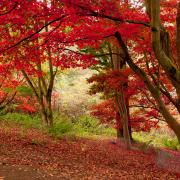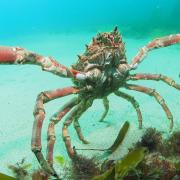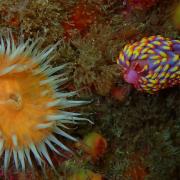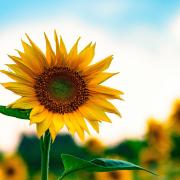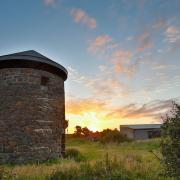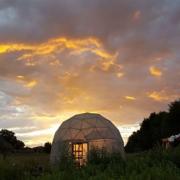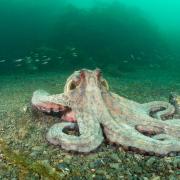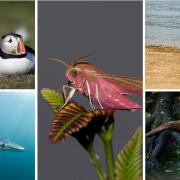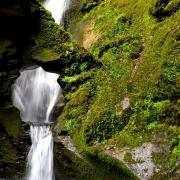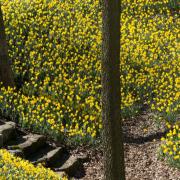Danny Groves from the Dolphin & Whale Conservation picks six cetacean species to look out for in the waters around Cornwall and the South West

Common Bottlenose Dolphin (Tursiops truncatus)
These sociable, inquisitive and playful dolphins are dark grey or sometimes bluish or brownish grey, with paler lower sides and lighter belly. They have a short, stubby beak, a high dorsal fin, long slender pointed flippers, and pointed fluke. The coasts of Devon and Cornwall are home to a group of 40 bottlenose dolphins, which roam widely and can be difficult to find.

Common Dolphin (Delphinus delphis/capensis)
The common dolphin species has now been separated into short-beaked (delphis) and long-beaked (capensis) varieties, but both have very distinctive colouring which forms an hourglass pattern on their sides. A yellow panel runs down the front half of both sides, separated from the grey stripe in the rear by a cape of black that forms a saddle just below the dorsal fin. These dolphins live in pods of between 50 and 100 individuals and are often seen off the Conish coast including Padstow, Hella Point, near Porthgwarra, and on ferry trips to the Isles of Scilly

Harbour Porpoise (Phocoena phocoena)
The only porpoise found in European waters and, although shy, its small size, characteristic rolling-swimming style and small triangular dorsal fin make it easy to recognise and being coastal species they don't tend to range far offshore. They can be seen all around the south west coast including Cornwall, Dorset and Devon; particularly Cornwall's Pentire Point, and Devon's Hartland Point and Foreland Point.

Risso's dolphin (Grampus griseus)
The body of an adult Risso's generally has a base colour of grey that is almost hidden by a pattern of white scars. They grow to about 4m in length and have a tall dorsal fin, and a bulbous forehead with no beak. The mouth slopes up to look like a smile. There are about six-10 reports of Risso's off the Cornwall coast a year but they are not as common as the bottlenose dolphins or common dolphins.

Fin Whale (Balaenoptera physalus)
One of the largest animals on the planet, it reaches 26 m in length, and second only to the Blue whale. They hare characterised by a long, thin grey body with a white underbelly and an asymmetrical colouration on their lower jaw, with a dark left side and white right side. They like subtropical and temperate waters during the summer and although rare have been spotted in coastal waters off Cornwall.

Humpback Whale (Megaptera novaeangliae)
One of the most energetic of the large whales, they can be distinguished by their large size, knobbly head and 5m long flippers. They indulge in spectacular breaching, lobtailing and flipper-slapping. Sightings are usually more common off the Scottish coast but can be seen off Cornwall and the Scilly Isles on their way further north.
Happy spotting! If you see any dolphins or whales along the Cornish coast, remember to let us know and to send in any of your photos.








